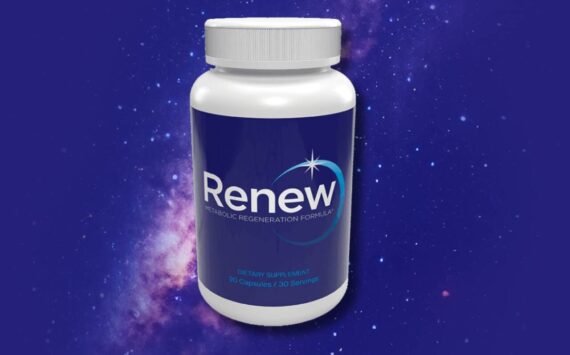Let me say that I was extremely impressed with the depth of the argument in opposition to nuclear energy as posed in the July 9 Arlington Times by the PUD Essay winner, Leah Rensel. It’s very encouraging to those in my generation to know that those in the following generations are looking at energy alternatives available to the world in the coming years. Ms. Rensel stated her position very well, however, as is often the case with issues, there are two sides which need to be considered and I would like to respond with another position.
First of all, as the world’s population increases, there will inevitably be demand for more electrical power. Energy sources that are available in the world include coal, nuclear, hydroelectric, gas, wind, solar, refuse-based and bio-mass. In addition, fusion had been originally proposed as the long-term source.
There’s a truly powerful pro-nuclear argument which needs to be given more attention: according to the Keystone Center’s “Nuclear Power Joint Fact Finding” released in 2007, failing to replace existing nuclear power plants over the next half-century would increase carbon emissions by 12.5 gigatons. Unless we’re planning on replacing all the nuclear facilities set to go off-line with something other than coal or natural gas plants, we’ll be making climate change worse.
As scary as the “what-if” scenarios for a nuclear reactor failure are, the reality has, so far, proved much less so. The World Health Organization carried out several studies after the 1986 Chernobyl disaster. One, conducted 19 years later, concluded that 75 deaths could be directly attributed to the accident. Other WHO findings: 28 deaths among first-responders in the year after the accident could be directly linked to acute radiation sickness; there was a large increase in highly treatable thyroid cancers among young people and no clearly demonstrated increases in leukemia or other non-thyroid solid cancers; and the lifetime risk of cancer deaths among those exposed to Chernobyl radiation was about 3 to 4 percent higher than average.
By comparison, the health impacts of the 1979 Three-Mile Island accident in the U.S. were minuscule, with no attributable illnesses or deaths. The Keystone Center’s “Nuclear Power Joint Fact Finding” last year said the average dose of radiation to the region’s 2 million people was about 1 millirem, with the maximum exposure to individuals right outside the site at less than 100 millirem. By comparison, a full set of chest x-rays delivers 6 millirem of radiation and a year’s exposure to natural background radiation gets you 100 to 125 millirem.
Participants in the Keystone Center’s report all conceded that “on balance, commercial nuclear power plants in the U.S. are safer today than they were before the 1979 accident at Three-Mile Island.” In fact, an industry study in 2003 found that even a direct-side impact by a large commercial airliner would not cause a loss of coolant at a nuclear power plant.
A National Academy of Sciences study found a low risk of widespread harm from either a terrorist attack or a serious accident involving spent nuclear fuel. And, again, the Keystone Center’s “Nuclear Power Joint Fact Finding” found that “the risk of a major accident at a nuclear facility is not seen as a significant risk by investors today.”
A 2001 study by the Paul Scherrer Institute in Switzerland found that, between 1970 and 1992, nuclear power had the best safety record of all major energy sources, both in terms of total deaths and deaths per terawatt of energy produced each year. The results for the top four sources were coal: 6,400 total deaths, 342 deaths per terawatt per year; hydro power: 4,000 total deaths, 884 deaths per terawatt per year; natural gas: 1,200 total deaths, 85 deaths per terawatt per year; nuclear power: 31 total deaths, 8 deaths per terawatt per year.
A life-cycle assessment by Meier Engineering Research found that nuclear fission energy actually had a lower life-cycle greenhouse gas emission rate than solar (using an eight-kilowatt, building-integrated photovoltaic system for the assessment): 15 tons of carbon dioxide-equivalent per gigawatt-electric of electricity, compared to 39 tons for photovoltaic. Of course, those rates were considerably higher for fossil-fuel sources like natural gas (469 tons) or coal (974 tons).
Nuclear power makes economic sense. According to the Energy Information Administration, operation, maintenance and fuel costs per kilowatt-hour for nuclear plants are more than twice those for hydroelectric, but nearly a third less than those for fossil steam energy and two-thirds less than either gas turbine energy or small-scale photovoltaic or wind energy.
During the nuclear testing heyday of the Cold War era, the superpowers set off numerous nuclear weapons; in 1962 alone, test bombs equaled the output of 20,000 Hiroshima warheads. Such tests released radioactive materials into the air equal to two Chernobyl’s a week for a whole year, yet no proven health damage to humans was observed in subsequent years.
In conclusion, it’s obvious that all energy sources have advantages and disadvantages. Nuclear has a number of advantages that warrant its use as one of the many methods of supplying an energy-demanding world. Even with conservation efforts, energy demand has been and will continue to increase. Other factors can accelerate that increase, e.g. the proposed shift to electric cars to meet environmental air quality goals.
In using each and every one of these forms of energy production we need to make sure we conserve as much as we can so we leave sources for future generations. Energy suppliers need to ensure that they do not contribute to short and long-term environmental problems. Governments need to ensure energy is generated safely so that neither people nor the environment are harmed. Much of this information and more can be found at www.nucleartourist.com/basics/why and planetsave.com.
Frank Barden is an Arlington resident responding to last week’s Guest Opinion by Leah Rensel.







